November 23, 2024
Washington Park is the crown jewel of Denver’s marvelous, extensive urban parks system. At 165 acres in a coveted in-town neighborhood, the park includes walking/biking paths, two large lakes, tennis courts, lawns and sports fields, volleyball courts, a rec center, a playground, and two lovely gardens. I explored both one afternoon in early October, in the full flush of fall.
Big Garden
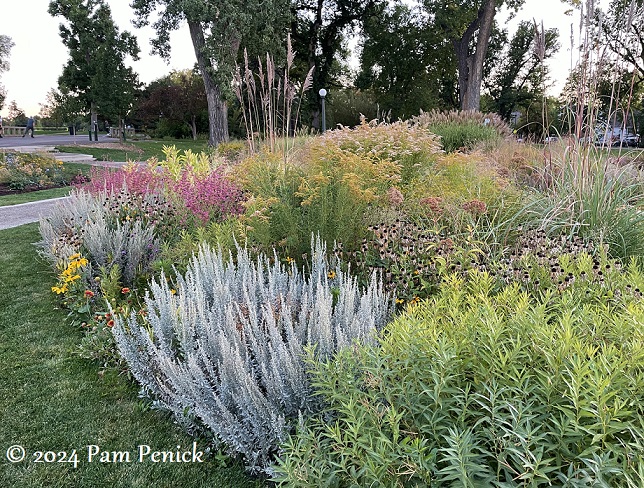
The biggest garden at Washington Park is called simply the Big Garden. Park horticulturist Skyler Smith has been in charge of design and maintenance of the Big Garden for the past three seasons. But the garden itself is much older. Skyler told me via email that the garden was established in 1917 and comprises 49 beds over 3 acres.
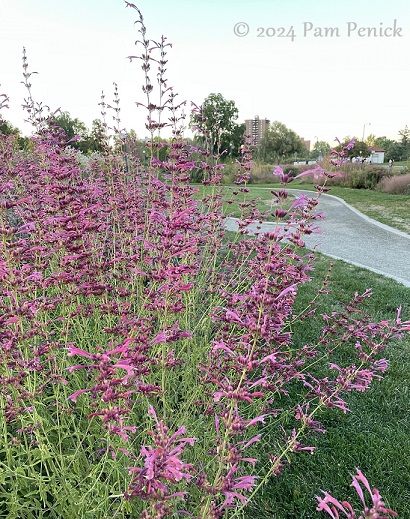
Until recently, bedding annuals made up most of the plantings. Skyler’s been working to change that. He says:
“The process of converting the garden from 100% annual beds to a mixture of perennials and annuals began in 2010 and has been ongoing in fits and starts since then….My goal for the next 3-5 years is to convert nearly all of the remaining turf and annual bed spaces into mostly native perennials with an emphasis on tall-grass, mixed-grass, and short-grass prairie plant communities. Many of the pathways that are currently turf will be converted to gravel to allow for lower watering schedules and more Colorado native plants. There will still be a few annual display beds at the entrance to the garden on the East side, but most of the beds along the outer Loop Road will be converted to native prairie and wildflower meadows.”
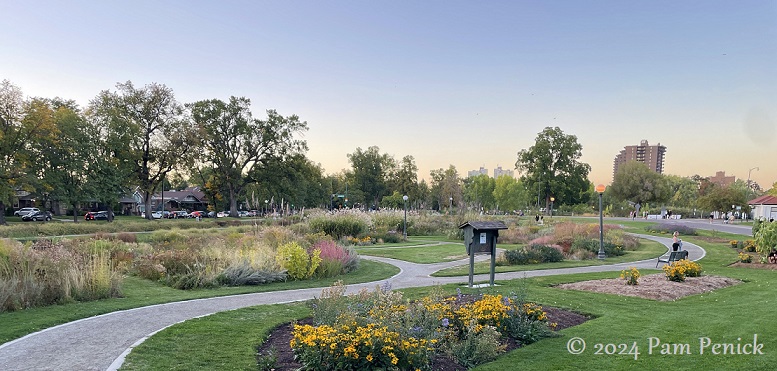
It’s impressive already, but imagine this with even more perennial gardens and less turf. Yes, please!
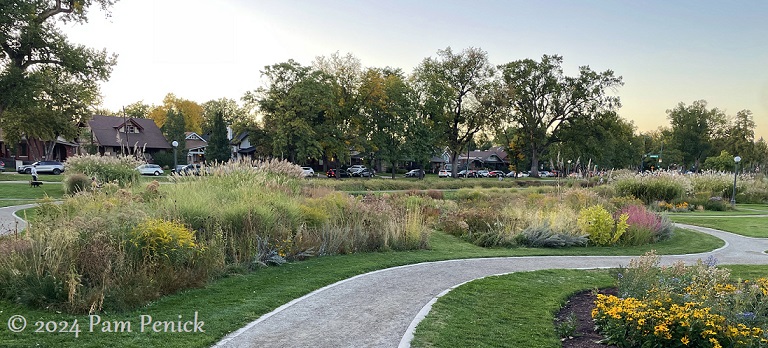
Skyler says that transitioning the Big Garden from exotic annuals to native perennials has not been universally embraced. But he makes outreach and education part of his job. “[M]any of the older community members,” he says, “still long for the huge annual displays of the past, but I do lots of tours and chatting with the people that walk through and they are usually convinced after hearing my spiel and seeing the results from the last few years.”
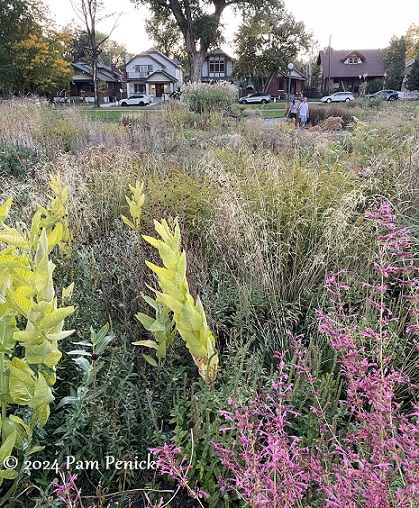
I didn’t hear his spiel, but I imagine it goes something like this: big annual beds are labor and budget intensive (requiring pulling tired plants out and replanting as the seasons change), need lots of water, and lack habitat for birds, insects, and other wildlife. Annual beds also don’t offer winter interest the way perennial gardens do when grasses and flowers gone to seed are left standing. Such gardens offer four seasons of beauty for human visitors as well as cover and seed for birds and protection for overwintering insects. And they conserve precious water in an increasingly warm and dry climate. Win-win-win!
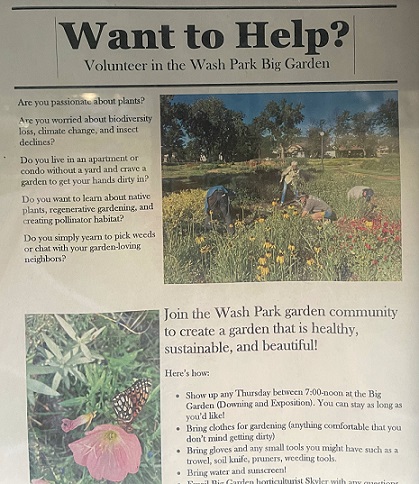
None of this happens without maintenance, of course. I spotted a volunteer flyer at the park and asked Skyler about it. He says, “We…have a weekly volunteer day every Thursday morning where people can drop in and help out. We have several people that come just about every week, with maybe 12 total volunteers that come in and out…[to] help with weeding and plantings.”
What a great way to get involved with Wash Park’s beautification, habitat creation, and water conservation, as well as meet other garden lovers.
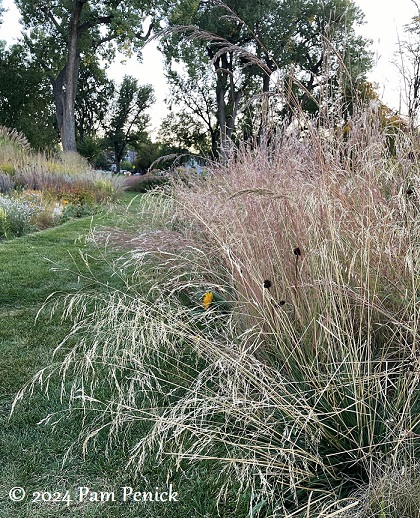
Here are a few more scenes from the Big Garden.
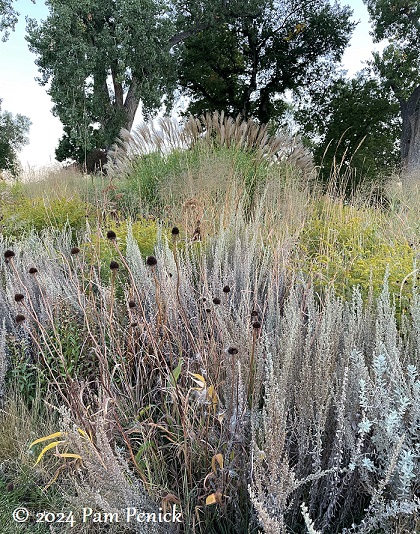
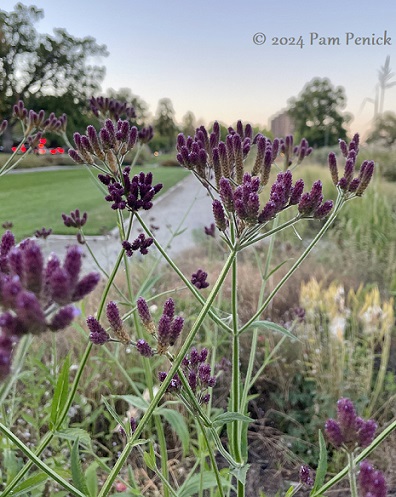
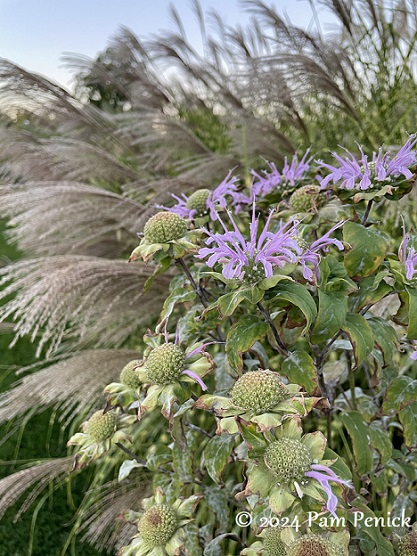
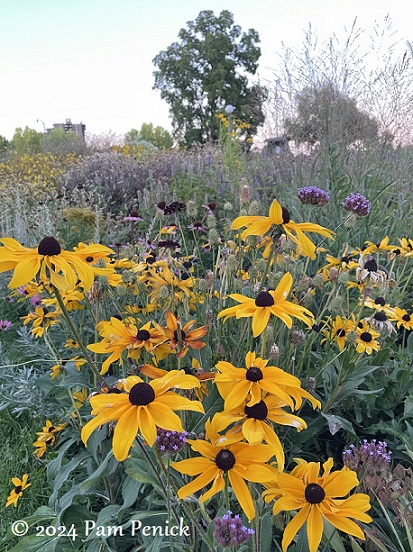
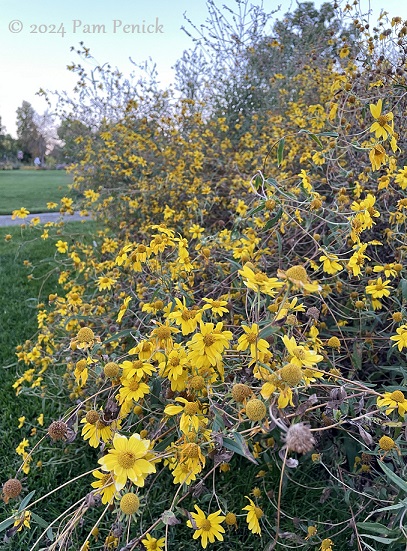
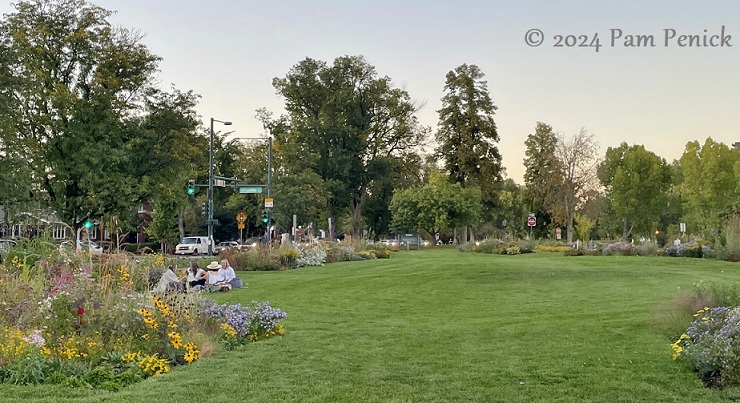
A group of girlfriends having a picnic supper in the garden made me think, “Goals!”
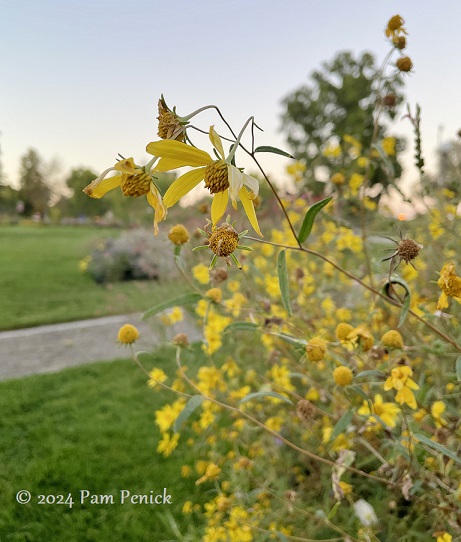
Mount Vernon Garden
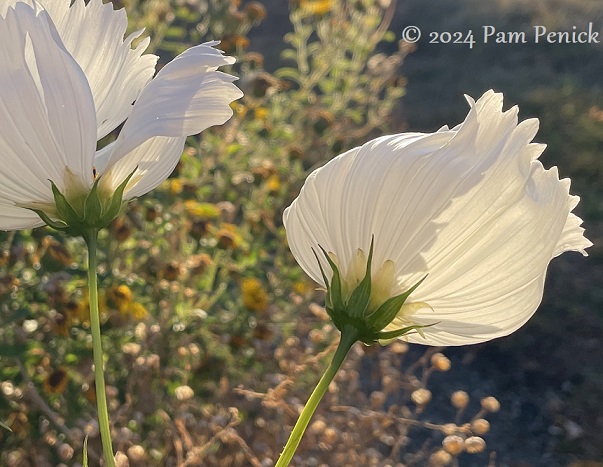
On the other side of the park, I found the Mount Vernon Garden aglow in the late afternoon light.
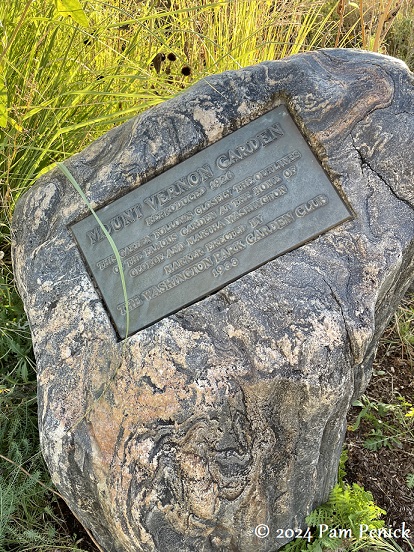
Mount Vernon, you may wonder? Why yes — the 1-acre garden, established in 1926, was created in honor of Washington Park’s namesake. A plaque reads, “This garden follows closely the outlines of the famous garden at the home of George and Martha Washington” — i.e., Mount Vernon in Mount Vernon, Virginia.
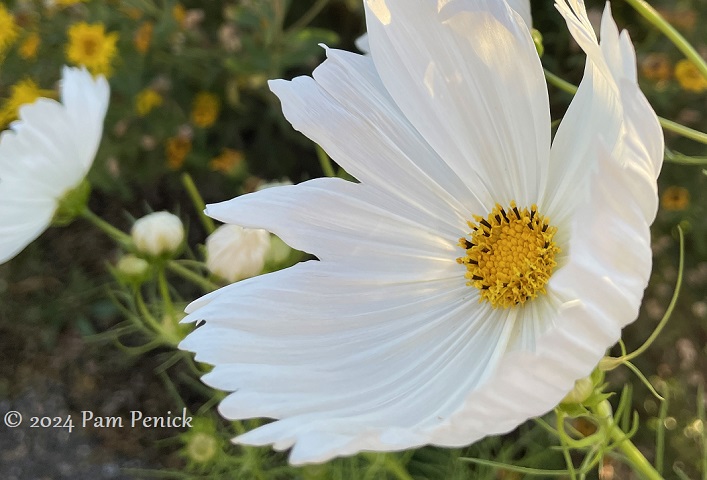
Although formally laid out along perpendicular axes, the garden is loosely planted with billowing perennials and annuals. I reached out to Jane Packard, the park horticulturist in charge of the garden, who told me:
“Since I’ve been the caretaker of Mount Vernon Gardens, I’ve continued the mission of incorporating waterwise and native perennials whenever possible and providing a habitat and food source for wildlife and pollinators. I also have a focus on bringing what I call ‘charismatic plants’ to the garden. What I mean by that [is] plants that elicit joy, curiosity, and wonder through unique colors, textures, and forms. Some of my favorite perennials that I continue to add to the landscape on a yearly basis include Monarda punctata, Echinacea pallida, Salvia azurea var. grandiflora, Pulsatilla patens, Limonium latifolium, and a variety of unique penstemons, including Penstemon ‘Red Rocks’. Nothing brings me more joy than someone stopping me and saying, ‘I’ve never seen this before, can I grow it in my own garden?’…[and] knowing I can always say, ‘Yes, and here’s how!’”
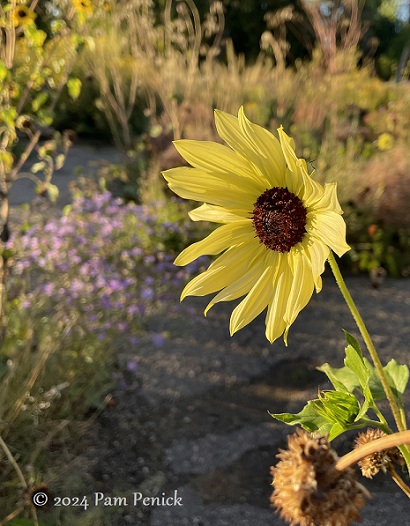
Jane does most of the garden maintenance herself but, like Skyler, relies on volunteers to help weed and plant. She says, “I am very fortunate to have cultivated a robust volunteer program. Every Wednesday, I have a dedicated group of about 5-7 lovely gardeners who come work their magic. Often that time is spent weeding, but they also assist with planting, edging, whatever needs to be done.”
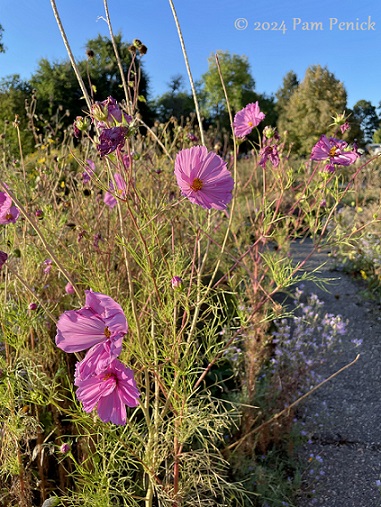
It sure sounds like Washington Park’s gardens are loved by its lucky neighbors and other folks across the city who come to enjoy the park.
Playground
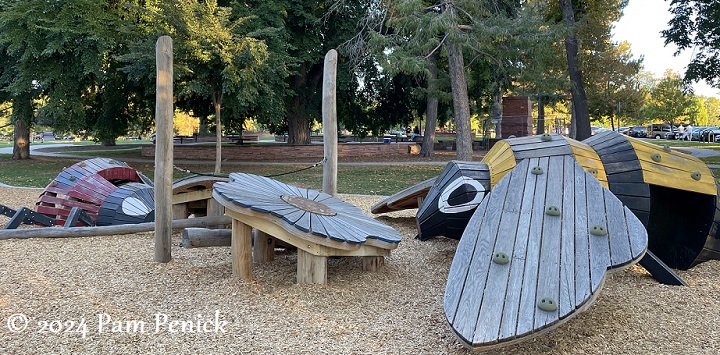
While exploring the park, I came across a cute playground with a giant bee, ladybug, and flowers. Climbing holds encourage kids to scale the wooden structures. They can play inside the fort-like bugs too.
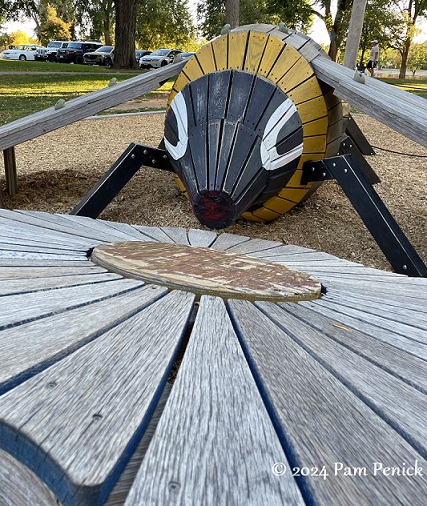
Calling all little pollinators
Smith Lake
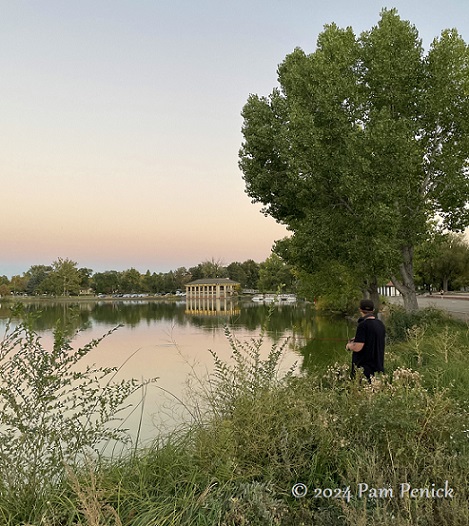
At Smith Lake I watched a fisherman cast his line into water reflecting an ombre sky.
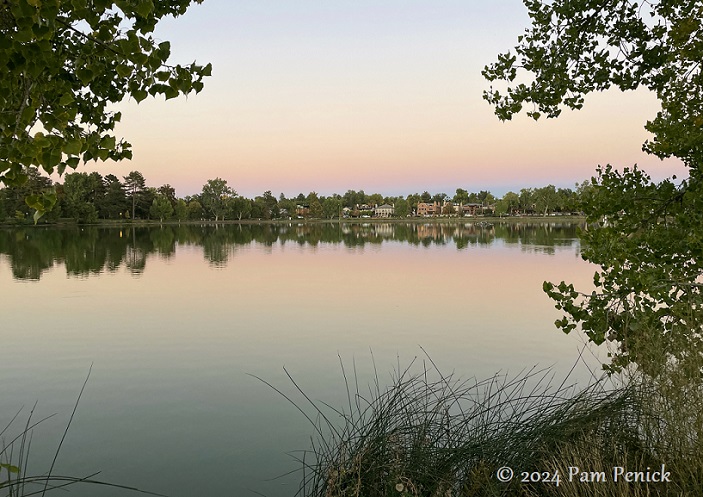
It was a serene end to my visit to beautiful Washington Park.
Up next: The Undaunted Garden and origami sculptures at The Gardens on Spring Creek in Fort Collins. For a look back at my hike in Eldorado Canyon near Boulder, click here.
I welcome your comments. Please scroll to the end of this post to leave one. If you’re reading in an email, click here to visit Digging and find the comment box at the end of each post. And hey, did someone forward this email to you, and you want to subscribe? Click here to get Digging delivered directly to your inbox!
__________________________
Digging Deeper
Come learn about gardening and design at Garden Spark! I organize in-person talks by inspiring designers, landscape architects, authors, and gardeners a few times a year in Austin. These are limited-attendance events that sell out quickly, so join the Garden Spark email list to be notified in advance; simply click this link and ask to be added. Read all about the Season 8 lineup here!
All material © 2024 by Pam Penick for Digging. Unauthorized reproduction prohibited.